Hello dear friends, In this post on Solsarin we’re mentioning “how many tires does a typical crawler have”. Stay with us to the end. Thanks for being with us.
A crawler is a program that visits Web sites and reads their pages and other information in order to create entries for a search engine index. The major search engines on the Web all have such a program, which is also known as a “spider” or a “bot.” Crawlers are typically programmed to visit sites that have been submitted by their owners as new or updated. Entire sites or specific pages can be selectively visited and indexed. Crawlers apparently gained the name because they crawl through a site a page at a time, following the links to other pages on the site until all pages have been read.
The crawler for the AltaVista search engine and its Web site is called Scooter. Scooter adheres to the rules of politeness for Web crawlers that are specified in the Standard for Robot Exclusion (SRE). It asks each server which files should be excluded from being indexed. It does not (or can not) go through firewalls. And it uses a special algorithm for waiting between successive server requests so that it doesn’t affect response time for other users.
A web crawler, or spider, is a type of bot that is typically operated by search engines like Google and Bing. Their purpose is to index the content of websites all across the Internet so that those websites can appear in search engine results.
More post for who are interested:
A web crawler, spider, or search engine bot downloads and indexes content from all over the Internet. The goal of such a bot is to learn what (almost) every webpage on the web is about, so that the information can be retrieved when it’s needed. They’re called “web crawlers” because crawling is the technical term for automatically accessing a website and obtaining data via a software program.
The goal of such a bot is to learn what (almost) every webpage on the web is about, so that the information can be retrieved when it’s needed. They’re called “web crawlers” because crawling is the technical term for automatically accessing a website and obtaining data via a software program.
These bots are almost always operated by search engines. By applying a search algorithm to the data collected by web crawlers, search engines can provide relevant links in response to user search queries, generating the list of webpages that show up after a user types a search into Google or Bing (or another search engine).
A web crawler bot is like someone who goes through all the books in a disorganized library and puts together a card catalog so that anyone who visits the library can quickly and easily find the information they need. To help categorize and sort the library’s books by topic, the organizer will read the title, summary, and some of the internal text of each book to figure out what it’s about.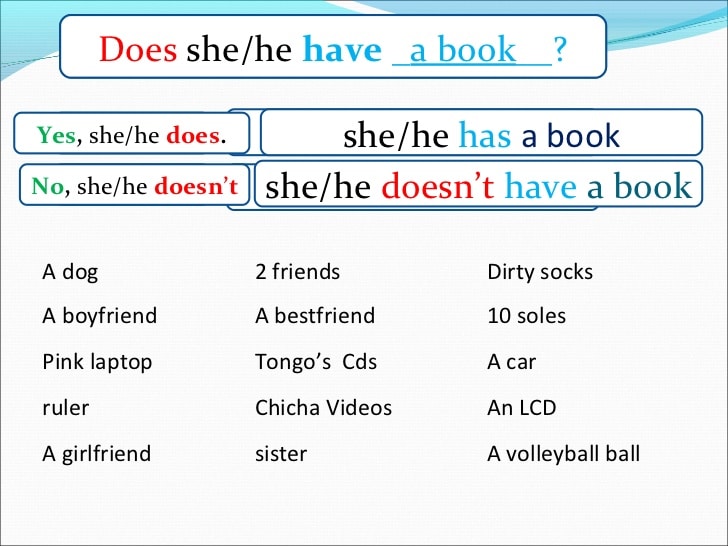
Basically 4 tires. But it’s not confirm.
how many tires does a typical crawler haveWhat is the Best RC Rock Crawler?When kids and teens are given a remote controlled car, it doesn’t take long and the little ones want to conquer the garden with the car. However, very few RC vehicles are suitable for off-road driving. RC crawlers are an exception. These vehicles are conspicuous by their large tires and the usually slow driving style. Rock Crawlers are not only popular as toys for children, but are also a great hobby for teens and adults, used for competitions in the US and other countries. A professional Best RC Rock Crawler Review will help to find a suitable vehicle for your purpose. We have divided them into three basic categories according to price level under 200 USD for kids and beginners; up to 300 USD for those who need more options and power in RC trucks, and finally – Premium Crawlers, with licensed real car bodies and parts. They are not cheap toys, depending on the scale, car body prototype, RC brand etc.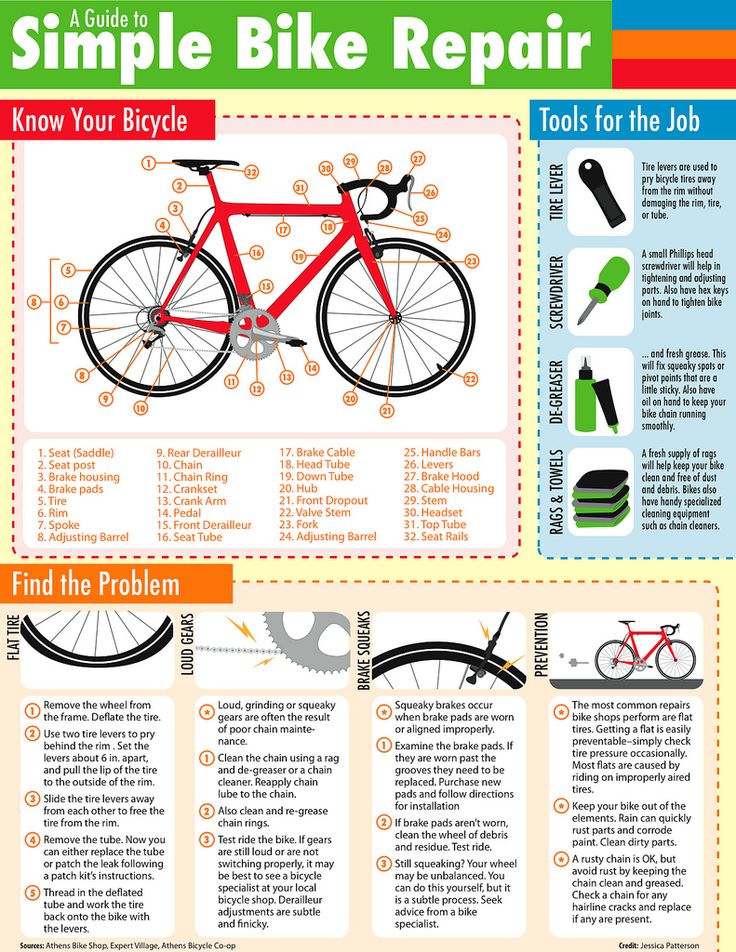 All the selected RC Rock Crawlers are suitable both for beginners and experienced drivers. If you are looking for a stunning crawling monster, you are in the right place. If you need a fast RC car, check some alternatives.
All the selected RC Rock Crawlers are suitable both for beginners and experienced drivers. If you are looking for a stunning crawling monster, you are in the right place. If you need a fast RC car, check some alternatives.
The boldest and toughest all-terrain vehicle ever. Traxxas has the spirit of Mercedes-Benz no-compromise approach. The Mercedes-Benz G 63 AMG 6×6 with an officially licensed detailed scale replica built on the new TRX-6™ platform it provides an ultimate driving pleasure for RC crawling gourmands. You can enjoy stunningly accurate body with brilliant LED lighting. Chrome accents, molded trim, and finely detailed lighting elements add to the general appearance. The Traxxas’ uncompromising attention to detail makes this TRX-6 a perfect expression of beauty and brutality. Let’s look at some important features:
how many tires does a typical crawler haveExclusive portal axles from Traxxas provide huge ground clearance! To achieve the same clearance with straight axles (and not get stuck), your tires must be 2.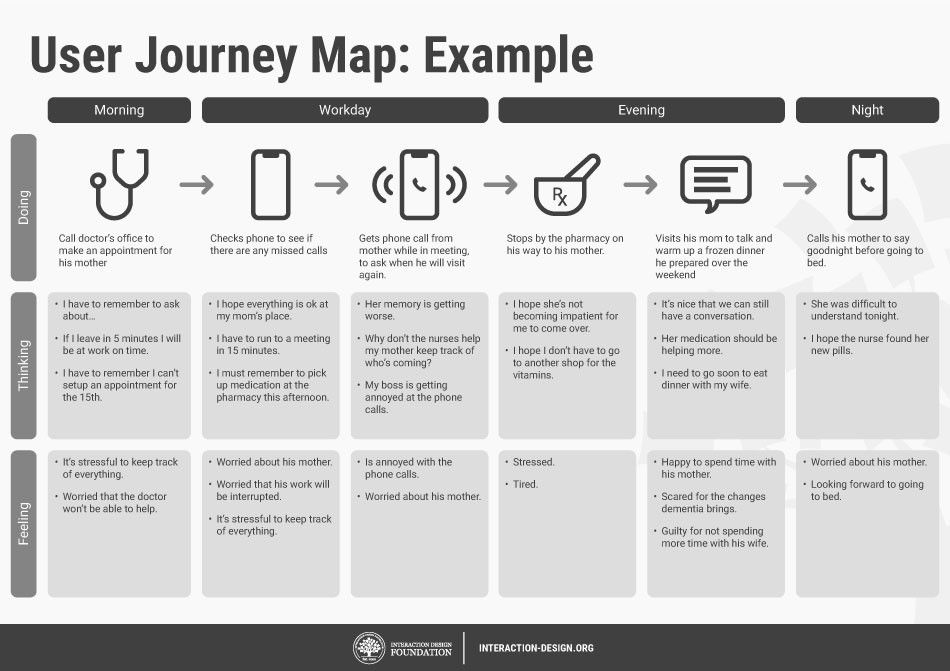 5 cm higher than the TRX-6. The TRX-6 with its portal axles will easily conquer the obstacle, leaving behind all other competitors.
5 cm higher than the TRX-6. The TRX-6 with its portal axles will easily conquer the obstacle, leaving behind all other competitors.
When the movement of the model becomes difficult, shift to a lower gear and all six wheels will burst into the irresistible surface. Shift to higher gear and the Mercedes-Benz G63 AMG 6×6 will turn into a desert racing car!
Traxxas was the first to create a model with three lockable differentials controlled from the control panel! Leave the differentials unlocked to take advantage of the small turning radius of the TRX-4, even with a 6 wheel drive and a long wheelbase. Lock the front differential and rear differentials to fully increase traction on all 6 wheels of four-wheel drive.
Six oil-filled shock absorbers ensure smooth drive and overcoming of all obstacles in their way. Threading on the shock absorbers allows you to adjust the height of the ground clearance! Specially tuned rear springs provide full rear axle independence for maximum traction on uneven ground.
Threading on the shock absorbers allows you to adjust the height of the ground clearance! Specially tuned rear springs provide full rear axle independence for maximum traction on uneven ground.
The unique 2.2-inch Badlock-style wheels with red trim are equipped with specially designed all-terrain tires. The tires are pre-glued and mounted on the model. The standard 12mm steel “hex” is used for compatibility with the full range of TRX-4 wheels and tires.
how many tires does a typical crawler have?
Previous Post
Next Post
SORRCA Rules & Specs. Course points & penalties
This rulebook is intended to standardize scale off road RC competitions that are held at various locations throughout the world. The intention is for all clubs/events to use these rules as written; however, they may be modified on a local basis. Any and all changes made to these rules at a SORRCA sanctioned event must be covered in a preliminary drivers meeting and publicly posted before the event.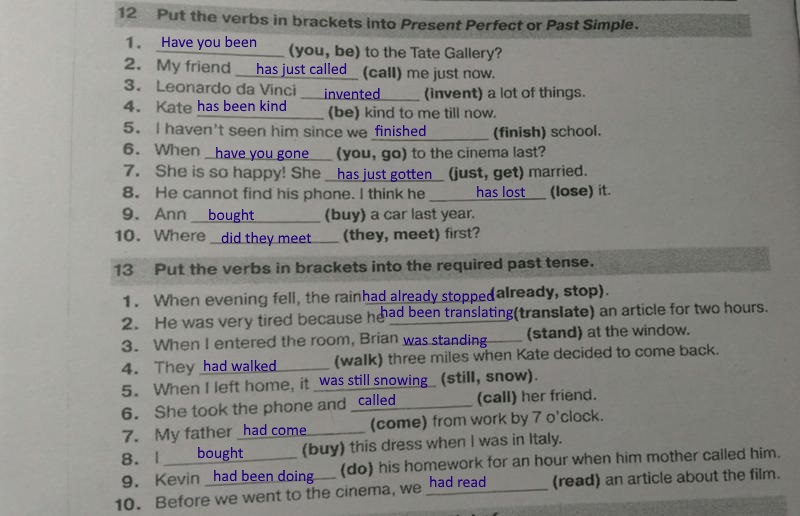
-The first rule of any Crawl Space scale event is to have fun! We are dedicated to fun and healthy competition with a family freindly setting and respecting the land and everyone in the RC scaler/crawler community.
Class Descriptions: Class-1 "Street" • Description - A street legal off-road vehicle that you would drive to work or the trail head and outfit like an expedition vehicle such as the Camel Trophy truck D90 rigs.
Class-2 "Trail" • Description - A stock vehicle that has been modified to become a capable trail rated rig and is not necessarily street legal .
Class-3 "Modified" • Description - An off-road vehicle that you would build from the ground up and might see in a TTC/KOH type competition.
General Vehicle Details • You are encouraged to go above and beyond to make your truck as scale as possible.
• Vehicles must resemble a real 1:1 rig. It will be up to the collective group to vote on whether a questionable rig is accepted or not.
• Tire size will be determined by advertised manufacturer specs (tires without available specs will be measured off the truck as mounted on the wheel laid flat).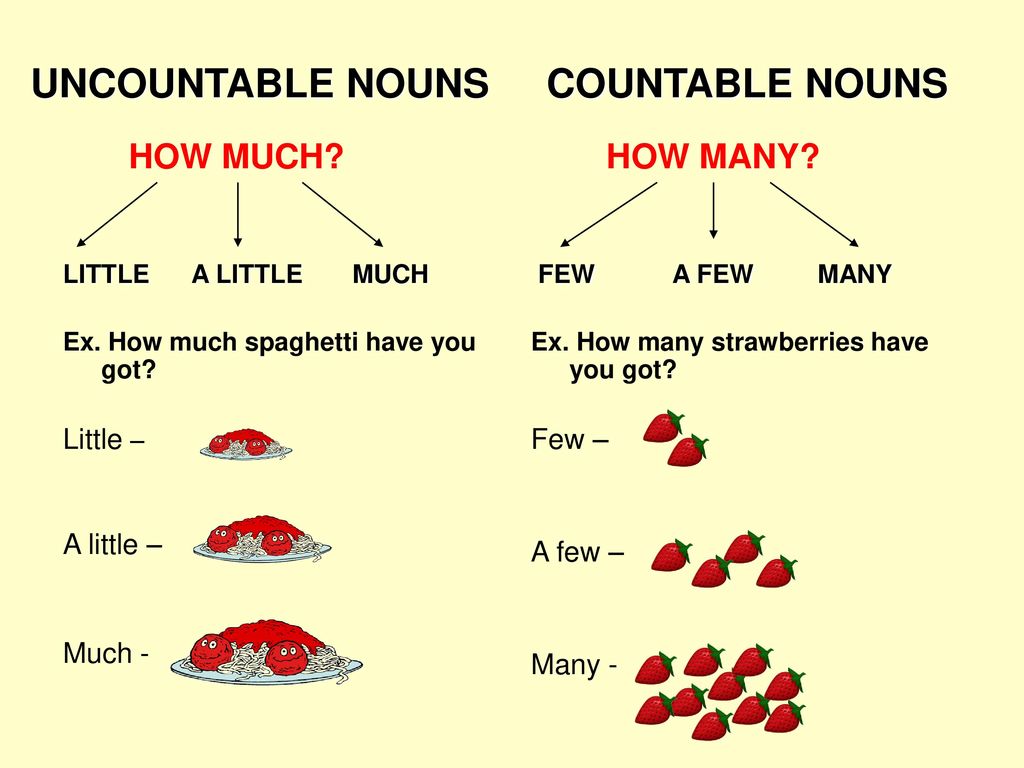
•Tire modification: Class-1 Street. No external tire modification is allowed.
• Class-2 Trail. Tire lugs may be removed, siped, grooved and/or trimmed.
• Class-3 Modified. Tire modifications are permitted, as long as the tire is no larger than 5.75" in diameter measured off the vehicle laying on its side, and all tire parts are from a legal scale tire.
• You must run a rail chassis (for example: Bruiser/Mountaineer, SCX-10, Reign RC K2-3S, 3L, 4, 5, MFM, X-Trail, CR-01, UTE, etc...).
• No TVP (twin vertical plate) chassis' or frame rail extensions on a TVPs.
• Tub chassis' are allowed, but chassis must be covered by the body and follow all other scale rules per class guidelines. An example of a tub chassis vehicle is CC-01, DF01, Twin Hammers, etc.
• 4-wheel steering or dig is allowed in modified class only (you must choose 1 per course).
• No "Motor On Axle" (MOA) of any kind. All motors, transmissions, and other electronics (other than steering servos) must be chassis or frame mounted. Your axles must be driven by one transmission or transfer case and a minimum of two driveshafts (except CC-01, TA-02, etc) No separate throttle control of drive shafts or axles.
Your axles must be driven by one transmission or transfer case and a minimum of two driveshafts (except CC-01, TA-02, etc) No separate throttle control of drive shafts or axles.
• There are no wheel size distinctions. For example, you can run a 1.55, 1.9, 2.0 or 2.2 rim in any class. Wheels larger than 2.2 are not allowed in any class and no short course style wheels with split diameters.
• Spare tires must be within 1/4" diameter of your drive tires to receive points.
• Any functional recovery tools you wish to use during your run, you must carry it on your rig at all times. IE tow strap, pull pal, and sand ladders.
• Winching can only be performed off of natural objects (i.e. trees, rocks, etc...), other vehicles, or stakes supplied by the course builder. Winching off of a person such as their shoe or hand is not allowed.
• All vehicles should have the motor, transmission, and electronics covered and hidden when viewed from the top and sides. Batteries must be chassis mounted and should be hidden from view.
• Courses will be tough and made to push the scale vehicle's limits. This is to encourage competitors to improve their rigs from one event to another.
• Winches are HIGHLY recommended!!!!! Expect to use a winch.
• Water proofing is HIGHLY recommended!!!!! Expect your rig to get wet.
Tire Ban List: • Losi Claws (all sizes, and types) • Hot Bodies Rovers (all sizes) • Hot Bodies Sedonas • HPI Rock Grabbers • Panther Cougars • Panther Leopards • Pro-Line Chisels (all sizes) • RC4WD Rocklin • RC4WD X-Locks (all sizes) • RC4WD Crazy Crawlers • Imex Skulls and Bones • Losi Bashers.
Tires should be scale appearing, if it is questionable have it reviewed before the event, or plan to run a different tire. As new competition specific tires are released this list may be updated.
Class-1 "Street" Details: • Vehicle must have a windshield that fills the entire windshield frame. • Full width bumpers are required on the front and rear of the vehicle. Bumpers that are molded into the body qualify. A rear bumper is not required on a flatbed, but adding one to the flatbed will gain the additional scale points. (Bumpers are measured from the outsides and must be the width of your windshield). • Wheels must be aligned within the body wheel wells (center of wheels to center of wheel wells +/- 1/2 inch total combined) • The vehicles body must be mostly intact. Only mild trimming such as flairs & removing a hardtop are allowed. If the hardtop is removed, a full interior is required (no extreme trimming of bodies allowed *See below.) • The tread of the tires cannot extend outside of the wheel wells more then 1/2 of the tread width, flairs can be added to reach min. spec. • Vehicle must run a full length rail chassis (The rail chassis must be as long as the vehicles wheelbase)(Tamiya CC-01 chassis are allowed). • Truggies are not allowed, flatbeds with full length rail chassis are allowed. The bed must be as wide as the cab the entire length of the bed. Cab only not allowed. • Tires can never extend beyond the body’s bumpers or the rear of any truck bed.
A rear bumper is not required on a flatbed, but adding one to the flatbed will gain the additional scale points. (Bumpers are measured from the outsides and must be the width of your windshield). • Wheels must be aligned within the body wheel wells (center of wheels to center of wheel wells +/- 1/2 inch total combined) • The vehicles body must be mostly intact. Only mild trimming such as flairs & removing a hardtop are allowed. If the hardtop is removed, a full interior is required (no extreme trimming of bodies allowed *See below.) • The tread of the tires cannot extend outside of the wheel wells more then 1/2 of the tread width, flairs can be added to reach min. spec. • Vehicle must run a full length rail chassis (The rail chassis must be as long as the vehicles wheelbase)(Tamiya CC-01 chassis are allowed). • Truggies are not allowed, flatbeds with full length rail chassis are allowed. The bed must be as wide as the cab the entire length of the bed. Cab only not allowed. • Tires can never extend beyond the body’s bumpers or the rear of any truck bed. (Any stingers, fairleads, shackles, bolts, etc are not considered part of a bumper when determining this.) • Dovetailing is not allowed. • Sectioning or narrowing of the body is not allowed. • Bobbing a truck bed is allowed, but must follow all body specs. • Boat sides are not allowed. • 106mm / 4.19" Max tire size including spares. • Gates will be a minimum of 11" wide (so mind your width).Class-2 "Trail" Details: • Body/cage work must be at least 4.5" tall (including boat sides) and the inside of the front tires cannot extend outside of the width of the cab at the doors. • A front bumper is required and must be mounted to the vehicle's rail chassis and must be wider than the outside of the chassis rails (chassis cross rails do not count as bumpers). • You must run a full rail chassis, and the chassis (including bumpers) must be 3" longer than the wheelbase (this includes a chassis with a truggy rear frame). •Truggies are allowed, but you must replace the ladder frame behind the cab with tube, and the truggy rails must extend past the rear axle pumpkin to be legal.
(Any stingers, fairleads, shackles, bolts, etc are not considered part of a bumper when determining this.) • Dovetailing is not allowed. • Sectioning or narrowing of the body is not allowed. • Bobbing a truck bed is allowed, but must follow all body specs. • Boat sides are not allowed. • 106mm / 4.19" Max tire size including spares. • Gates will be a minimum of 11" wide (so mind your width).Class-2 "Trail" Details: • Body/cage work must be at least 4.5" tall (including boat sides) and the inside of the front tires cannot extend outside of the width of the cab at the doors. • A front bumper is required and must be mounted to the vehicle's rail chassis and must be wider than the outside of the chassis rails (chassis cross rails do not count as bumpers). • You must run a full rail chassis, and the chassis (including bumpers) must be 3" longer than the wheelbase (this includes a chassis with a truggy rear frame). •Truggies are allowed, but you must replace the ladder frame behind the cab with tube, and the truggy rails must extend past the rear axle pumpkin to be legal. The bed must have a roll bar hoop and integrated shock mounts. It also must be a structural part of the rear of the vehicle. (If your bed does not meet ALL of the preceding criteria, it does not count as a truggy bed). • Flatbeds that run the full length of the rail chassis are allowed. The bed must be as wide as the cab the entire length of the bed. • 2 of the 3 following modifications are allowed: - Dovetailing the rear (1/2 the width of the widest part of the cab) *a truggy/tube bed that is narrower than the cab counts as a dovetail*. - Boat sides (no more than 1.25" measured vertically from the bottom of the skid). - Pinching the front (2/3 the width of the widest part of the cab). • 120mm / 4.75" max tire size with a 2.2 max rim size including spare. • Gates will be a minimum of 12" wide (so mind your width).
The bed must have a roll bar hoop and integrated shock mounts. It also must be a structural part of the rear of the vehicle. (If your bed does not meet ALL of the preceding criteria, it does not count as a truggy bed). • Flatbeds that run the full length of the rail chassis are allowed. The bed must be as wide as the cab the entire length of the bed. • 2 of the 3 following modifications are allowed: - Dovetailing the rear (1/2 the width of the widest part of the cab) *a truggy/tube bed that is narrower than the cab counts as a dovetail*. - Boat sides (no more than 1.25" measured vertically from the bottom of the skid). - Pinching the front (2/3 the width of the widest part of the cab). • 120mm / 4.75" max tire size with a 2.2 max rim size including spare. • Gates will be a minimum of 12" wide (so mind your width).
Class-3 "Modified" Details: • 146mm / 5.75" max tire size with a 2.2 max rim size (including spare). • A bumper is not required, but to be counted for points it must be mounted to the vehicle's chassis and wider than the the chassis rails (chassis cross rails do not count as bumpers).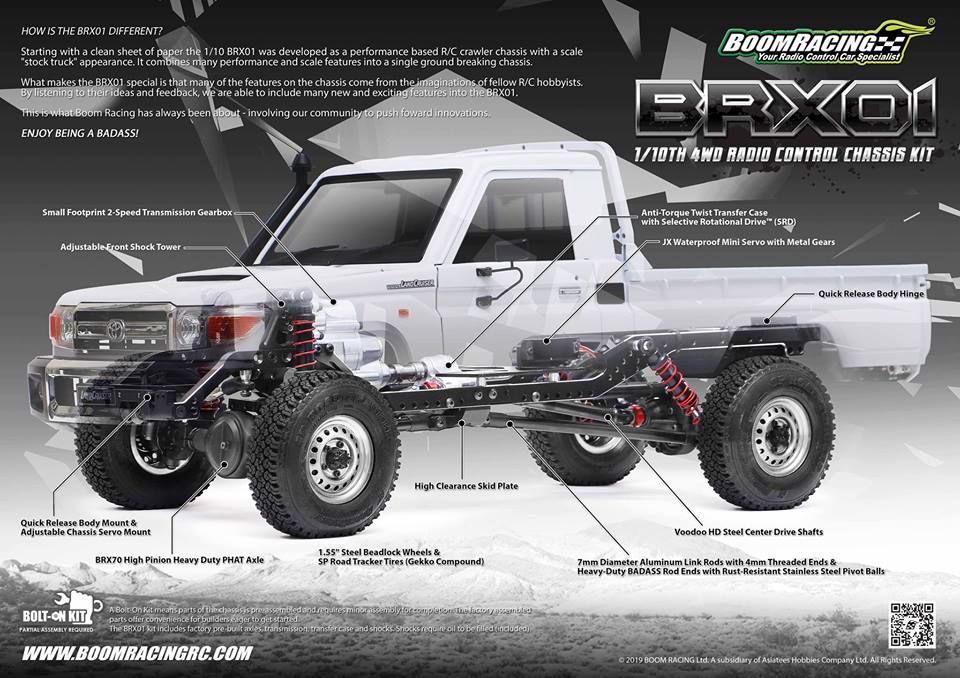 • Gates will be a minimum of 13" wide.
• Gates will be a minimum of 13" wide.
• Class 3 body minimum specs: Rock sliders, mirrors, etc do not count in these measurements: - The distance between the inside of the tires (of any axle) can be no greater than 1.25" more than the width of the body at the doors. *Example* (7" inside-of-tire to inside-of-tire = body must be 5.75" wide). - The body must be at least 5" wide from the front to the rear of the doors.
- Tire height can be no more than 0.5" taller than cab height. Height is measured from the bottom of the skid to the top of the bodywork/tube not including a light bar. (5.5" tire = 5" tall from bottom of skid to top of cab/tubework) - Body must be at least as long as the wheelbase of the vehicle. • Body modifications including, but not limited to, pinched front, dove-tailing and boat-siding are permitted as long as the final dimensions comply with the minimum size rule.Scale Points: Scale points are to be awarded at 50% of a vehicles total value (rounded down if necessary) for an average 10 gate course. Minimum/Maximum values are to be determined by the event organizers or local clubs. Scale points will be applied to a DNF but not to a DNS.
Minimum/Maximum values are to be determined by the event organizers or local clubs. Scale points will be applied to a DNF but not to a DNS.
*No items can be counted more than once unless noted otherwise*
Bed: Not available to tubers.
-Tube bed OR flatbed: metal -3, plastic -1
-Bed mounted headache rack or roll bar: metal -2 plastic -1
•Truggy/back halved truck: metal -4, plastic -2 (Must replace the ladder frame behind the cab with tube, and must extend past the rear axle pumpkin to be legal. The bed must have a roll bar hoop and integrated shock mounts. It also must be a structural part of the rear of the vehicle. (If your bed does not meet ALL of the preceding criteria, it does not count as a truggy bed).
Tube bed, roll bar, shock mount points not available in addition to truggy bed points.
Tuber: metal -8, plastic -4. A tuber consists of a complete body structure where the front, cab, and rear sections are comprised entirely of structural tubework. Tube bed, roll bar, internal cage, and shock mounts points not available in addition to tuber points.
Tube bed, roll bar, internal cage, and shock mounts points not available in addition to tuber points.
-Rigid metal/plastic body panels -1
-Interior cage or exo-cage: (-3 metal -1 plastic) per row of seats or area where seats would be (vehicle doesn't need an interior to get these points). Cage must have down bars and cross bars in front and behind each row. Not available to tubers.
-Tube accessories: • Sliders: (both sides) metal -3, plastic -1
-Integrated tube shock mounts: metal and brazed/welded to frame -1 (per pair)
Body:
-Hard body: full -8, cab -4 • Drop bed : -3. -Complete custom built body: (metal or hard plastic, no lexan) full -4, Cab -2 (in addition to hard body points)
-Inner fender wells: -1 per pair.
Bumpers (items must be chassis mounted and separate from the body)
-Bumpers : metal -3 each , plastic -1 each.
-Stinger/grill guard: -1
Exterior roof rack/light bar (may only choose one)
-Roof rack: metal: -2, plastic -1.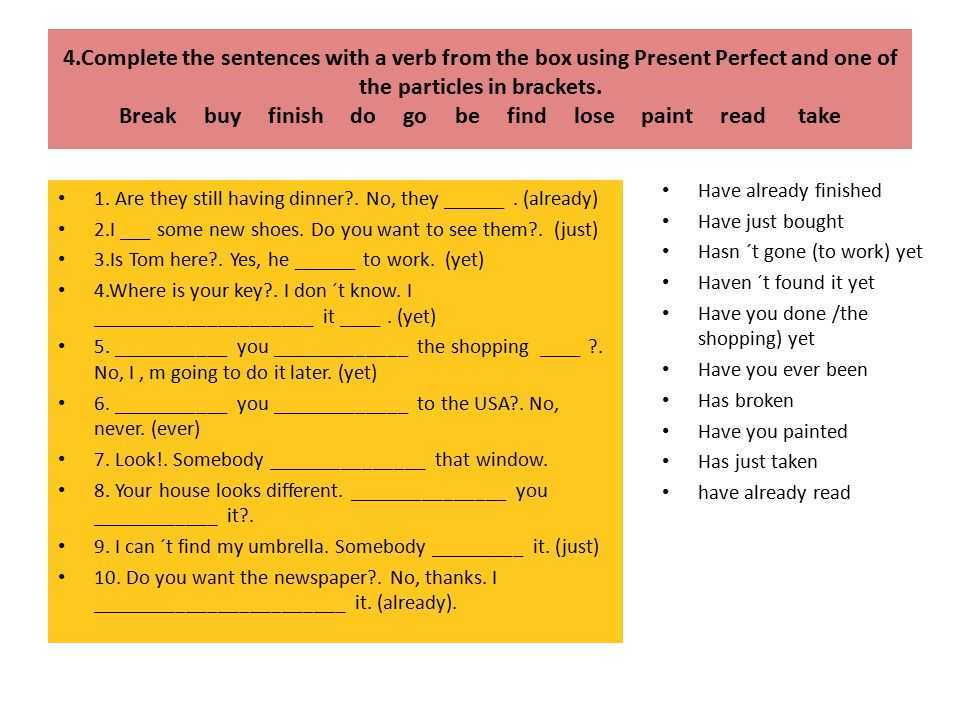 -Roof top light bar metal -1.
-Roof top light bar metal -1.
Interior.
-3D interior: 1 seat -3, 2 seat (or bench) -4, 4 seat -5 (any 3D interior must include seat, dash, steering wheel and floor). A 3D SUV cargo area will be awarded an additional -1
-2D/half interior: 1 seat -1, 2 seat -2, 4 seat -3. • Driver/passenger must be human, scale sized adult figures. Only available if accompanied by an interior.
-4 Complete Figure -3 Knees Up -2 Torso Up -1 Head with arms -1 point for 3rd and 4th passengers (Kids OK for 3rd & 4th passengers
Suspension/drivetrain/steering.
-Leaf springs (front/rear): -3 ea, -7 both.
-Multiple axles: 3 driven axles -3, 4 (or more) driven axles -5
-Chassis mounted steering servo: -5 (front) -2 (rear) *rear= Class 3 only*
-Functioning transfer case: -4.
-3D engine: Must be in a reasonable location and appear to be powering the drivetrain of the vehicle (-4)
Realistic exterior items (max -6 pts): Items that are non-functional but you would see on a trail truck.
-Fuel cell, exhaust, jerry can, hubs on all wheels, steering stabilizer, disc/drum brakes on all wheels, mirrors(2), wipers(2), antenna, license plate, fire extinguisher, trail tools (Hi-lift jack, etc.) first aid, etc. -1 each.
Functional items (max -8 pts for all items listed below)
-Tow strap, -D-ring, Pull Pal, sand ladder, hitch, opening doors and hood, spare tire mount, etc. -1 each.
-Headlights(2) and taillights(2) -2
-Winch -2 front, -2 rear (max -4)
-Full size spare tire. -3
Course points and penalties
Progress: -2 points
Back up/reverse: +1 point
Gate marker: +10 points
Rollover: +5 points
Boundary Marker: +10 points
Vehicle touch (repair & repositions): +10 points
Course direction: +10 points
Winch: +3 points
Assisted recovery: +10 points
Dig/rear steer: +5 points
Did not finish (or point out): point out or high score on course +20 points
Did not start: Point out or high score on course +50 points
Safety Time out
Vehicle out of Spec
-Progress: (-2 progress point) shall be awarded to drivers for each gate that is cleared by the vehicle during the attempt of a course. A gate is considered cleared and a progress bonus shall be given when at least one front and one rear tire passes completely through the gate in the intended direction of the gate. All tires must pass completely through the gate to receive the progress bonus without a gate penalty. A 10 point gate penalty shall be given if all tires do not clear the gate, even if no gate marker is touched or straddled. The tires of the vehicle must travel completely through the gate, and not just break the plane of the gate. Tires must pass through the gate in the same direction and in the same attempt before a progress bonus is awarded. These points are deducted from the total course score. Once a driver has pointed out, no further progress points will be awarded.
A gate is considered cleared and a progress bonus shall be given when at least one front and one rear tire passes completely through the gate in the intended direction of the gate. All tires must pass completely through the gate to receive the progress bonus without a gate penalty. A 10 point gate penalty shall be given if all tires do not clear the gate, even if no gate marker is touched or straddled. The tires of the vehicle must travel completely through the gate, and not just break the plane of the gate. Tires must pass through the gate in the same direction and in the same attempt before a progress bonus is awarded. These points are deducted from the total course score. Once a driver has pointed out, no further progress points will be awarded.
-Back up/reverse: (+1 pt) point is given when a vehicle reverses course after making forward progress. Reversing is defined as at any time if any of the tires move the vehicle backward or spin in the reverse direction, whether engaged or in freewheel and/or whether intentional or not. Once a reverse penalty is given, no further reverse penalty can be given until the vehicle makes forward progress. No penalty is given if the backward movement is part of a penalized rollover. If a driver begins a course in reverse, a reverse penalty will occur immediately.
Once a reverse penalty is given, no further reverse penalty can be given until the vehicle makes forward progress. No penalty is given if the backward movement is part of a penalized rollover. If a driver begins a course in reverse, a reverse penalty will occur immediately.
-Gate marker: (+10 pts each) each gate will be comprised of 2 gate markers. Points are given when all wheels do not travel between gate markers or any part of the vehicle, a tow strap or winch line touches a gate marker. A gate marker will remain "live" for the entire duration of the attempt on the course. Once any gate marker has been touched or straddled, no more penalties will be given for that gate marker. Only when a gate penalty is assessed will that gate marker be deemed "dead". No further penalties will be assessed at this point for that gate marker. There will no longer be a penalty for stepping on a gate (for safety reasons) but please stay off course as much as possible and limit course damage.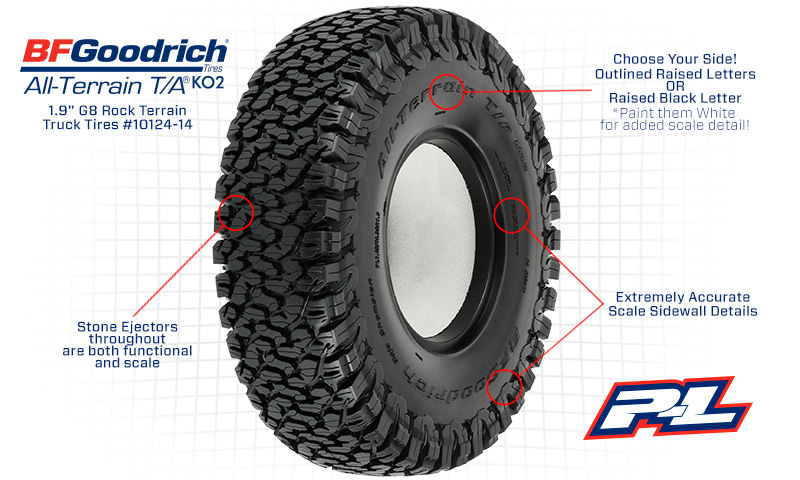
-Rollover: (+5pts) Points are given when a vehicle rolls over and cannot be corrected without touching. Once the vehicle has stopped it may be rolled back onto it's wheels and a +5 point penalty shall be given. Vehicles that land back on their wheels without assistance are not penalized. No reverse penalties will be awarded until the vehicle is righted. The vehicle may at no time be lifted, slid or moved in any way other than a smooth, continuous roll to the left or right side only. Any other manipulation or movement of the vehicle will be considered a "vehicle touch" penalty.
-Boundary Marker: (+10 pts each) Points are given when any part of the vehicle touches a boundary marker. Once a boundary marker is touched the judge then will stop time, and the vehicle is then moved back by the driver to the previously cleared gate with the rear axle aligned to that gate. If the vehicle cannot be aligned to the gate due to course design, the judge will reposition the vehicle to the next stable location after the cleared gate. This location will be used for all drivers. A boundary marker will remain "live" for the entire duration of the attempt on the course, and should be replaced if moved. Boundary markers are not required in the design of a course.
This location will be used for all drivers. A boundary marker will remain "live" for the entire duration of the attempt on the course, and should be replaced if moved. Boundary markers are not required in the design of a course.
-Vehicle touch: (+10 pts) All vehicle touches excluding “rollovers”, "winching", "assisted recoveries" (see associated rules) , intentional or unintentional, are given an automatic +10 points. The judge then will stop time when either the driver calls for a vehicle touch or the judge calls a driver touch. The vehicle is then moved back by the driver to the previously cleared gate with the rear axle aligned to that gate. If the vehicle cannot be aligned to the gate due to course design, the judge will reposition the vehicle to the next stable location after the cleared gate. This location will be used for all drivers. Note: All gates for progress are still “live” unless a gate has already been deemed “dead”. Vehicle touches: include but are not limited to: repairs, repositions, vehicle driving/falling into the driver.
-On-course repairs: (+10pts) Must be completed on course and in the spot of which the driver decided to take the repair. Repairs must be made within the course time, while the course timer will continue to run. If repairs are made within the course time, the driver must return to the last previous gate cleared. If repairs cannot be made within the course time, the driver is given a DNF minus progress points for that course. There are no restrictions on whom or how the repairs are made.
-Off-course repairs: (+10pts) A driver can call time to make an off-course repair. Repairs should be completed within 30 minutes, or the driver is given a DNF minus progress points. If the repair is made in the allotted time, the driver must return to the last previous gate cleared. A 1 minute time penalty will be subtracted from the time that is left on that course, the timer will continue once the vehicle makes forward progress.
-Reposition: (+10 pts) The vehicle will be placed with it's rear tires in the last gate progressed or the nearest stable location after the last cleared gate if the last gate cleared is unstable.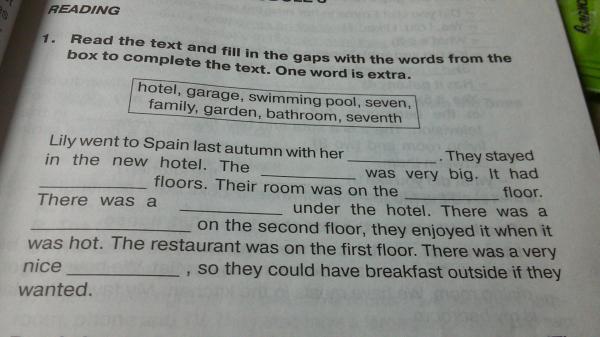 Course Direction: (+10 pts) Gates must be cleared in their intended direction and sequence. Any part of the vehicle entering an non-cleared gate in the wrong direction, or driven through out of sequence will result in a +10 point penalty. The judge will stop time. The vehicle is then moved back to the previously cleared gate (see reposition rule). Once the gate is cleared and awarded progress it can be traveled in any sequence or direction.
Course Direction: (+10 pts) Gates must be cleared in their intended direction and sequence. Any part of the vehicle entering an non-cleared gate in the wrong direction, or driven through out of sequence will result in a +10 point penalty. The judge will stop time. The vehicle is then moved back to the previously cleared gate (see reposition rule). Once the gate is cleared and awarded progress it can be traveled in any sequence or direction.
-Winching: (+3 pts each) A winch penalty will be assessed every time the winch cable is connected for a pull. If the winch line comes unhooked during a pull, or a 2nd attachment is needed, another penalty will be assessed. If at any time during the process of removing recovery tools and/or winch line from vehicle, the vehicle is moved by any force other than it's winch or it's own power, a touch penalty will be assessed and the vehicle repositioned to the last cleared gate (see vehicle touch rule).
-Assisted Recovery: (+10 pts) At any time during the course, a driver may call for an assisted recovery. With the clock running, another vehicle will be brought onto the course to pull or winch the stranded vehicle to safety. The stranded vehicle shall not be pulled beyond the original position of the rescuing vehicle or it will result in another assisted recovery penalty.
With the clock running, another vehicle will be brought onto the course to pull or winch the stranded vehicle to safety. The stranded vehicle shall not be pulled beyond the original position of the rescuing vehicle or it will result in another assisted recovery penalty.
-Dig/Rear steer (Class 3 only): (+5 pts) Dig and rear steer are both legal in Class 3, but only one may be used per course. The first use of dig or rear steer will incur a +5 point penalty, subsequent uses of the same feature (dig or rear steer) on the same course are free. Use of the other feature is prohibited. If at any time on the same course the driver uses rear steer after using dig, or uses dig after using rear steer, a +10 reposition penalty will be incurred, and the truck will be placed at the last cleared gate.
-DNF (Did Not Finish): (High score or point out +20 pts) are given anytime a driver cannot complete a course for any reason. (Time expired, point-out, vehicle not repairable, went hom, etc) Progress points are awarded for each gate completed and scale points are awarded.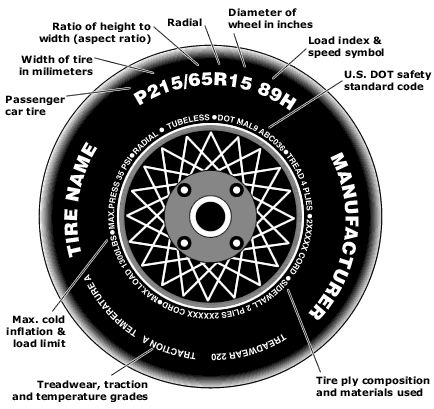 **If there is no point out you use the highest score on that course before scale and progress points**
**If there is no point out you use the highest score on that course before scale and progress points**
-DNS (Did Not Start): (High score or point out +50 pts) are given anytime a driver cannot start a course for any reason. Vehicle must start course under its own power. No scale points will be awarded to this course.
-Safety time out: A driver may call for time to stop so that he or she may safely reposition themselves on the course. This time shall be used for the purpose of driver safety and may not be used to survey the course or for any other advantage. Once the competitor is repositioned the time will start, however the judge has the right to start time at any point.
-Vehicle out-of-spec: If the Judge has reason to believe a vehicle is out of spec during a course run, he may call time to stop. At that point no additional inputs maybe given by the driver to the vehicle via touch or radio control. The Judge must mark the vehicle’s location and perform a tech inspection in the specified tech area (same manner as all other tech inspections).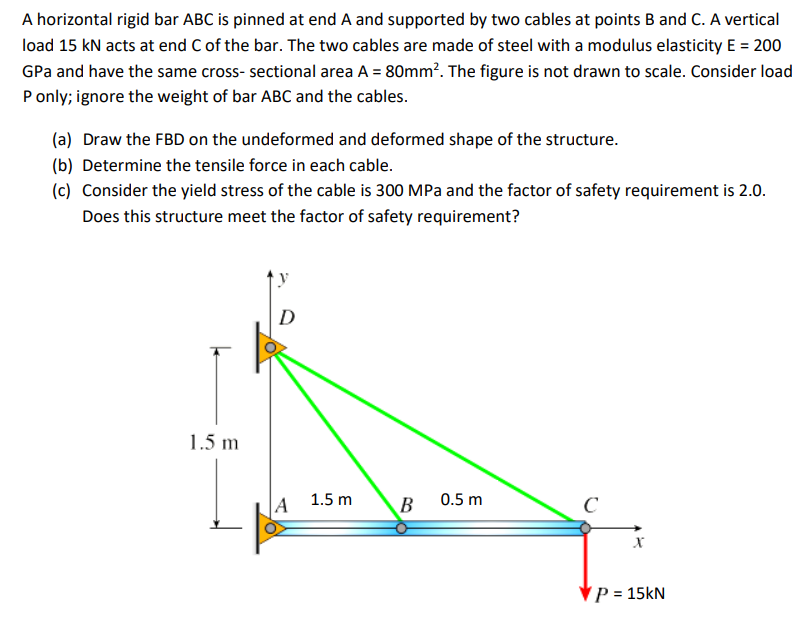 If the vehicle has been deemed within spec, the driver and vehicle will return to the location marked by the judge and the clock will start once again. If the vehicle is now out of spec and the Judge has determined that the vehicle has gained an advantage, the driver must take a repair to correct the problem. If the problem cannot be corrected to bring the vehicle back within spec, the driver will receive a DNF for that course. If a vehicle falls out of spec due to breakage on course and the judge determines the driver has not gained an advantage, then the driver may be allowed to continue on course without stopping time and requiring a tech inspection. Bodies, and body panels are not included in this exception, and must be replaced immediately, standard repair procedures and penalties.
If the vehicle has been deemed within spec, the driver and vehicle will return to the location marked by the judge and the clock will start once again. If the vehicle is now out of spec and the Judge has determined that the vehicle has gained an advantage, the driver must take a repair to correct the problem. If the problem cannot be corrected to bring the vehicle back within spec, the driver will receive a DNF for that course. If a vehicle falls out of spec due to breakage on course and the judge determines the driver has not gained an advantage, then the driver may be allowed to continue on course without stopping time and requiring a tech inspection. Bodies, and body panels are not included in this exception, and must be replaced immediately, standard repair procedures and penalties.
Testimonials
"I've been shopping here for a couple years now. Each and every time I go, it's top notch service with the right part for the job and purpose.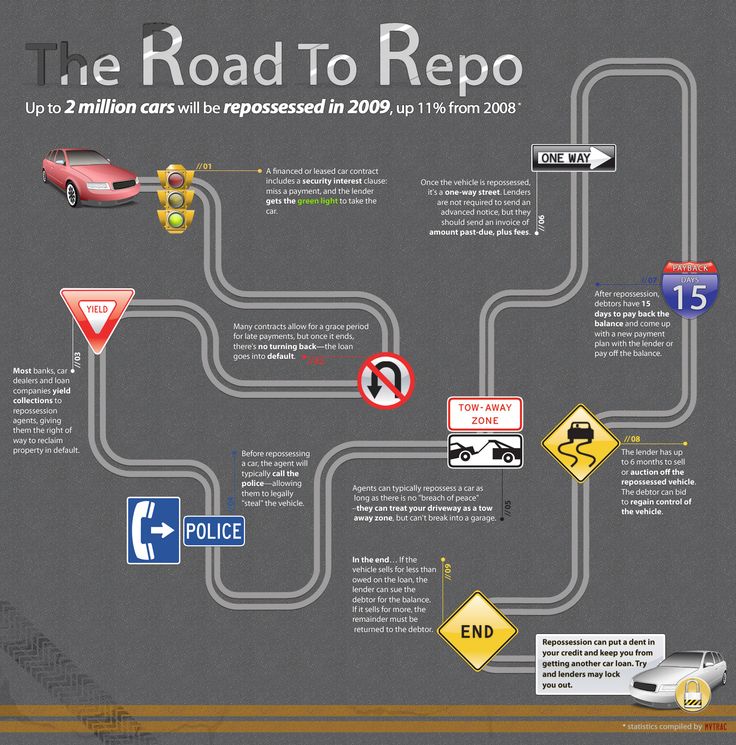 Special orders happen promptly wi..."
Special orders happen promptly wi..."
Marcus
"The crawl space should be everyone's first stop for Remote Control Rock Crawler and Scaler needs. The owners give great advice and unbiased opinions about products. he know and..."
Bee Vang
Read more testimonials...
History of a hybrid
Sergey Egorov, photo from the author's archive
machines.
One of the areas of this work was the construction of numerous half-tracked vehicles equipped with a kegress undercarriage with rubber-cord tracks. Another direction was the creation of vehicles with a combined wheel-caterpillar mover. In this case, the tracks were used only off-road, and when driving on wheels they were in a raised state, while “eating” a considerable part of the payload. Work in this direction was carried out in Austria, Great Britain, France, Czechoslovakia and Sweden. A similar machine appeared in the USA. nine0003
Since 1916 in Morris, New York, there was a company Linn Manufacturing Corp. , which specialized in the production of half-tracked vehicles with "tractor" type tracked undercarriage - with drive sprockets and metal tracks. These machines were designed to work with heavy loads in off-road conditions and were used in agriculture and roads, construction and logging. Due to the large transmission ratios, which could reach 116, Linn cars were excellent tractors, however, due to their design, their speed did not exceed 19km/h
, which specialized in the production of half-tracked vehicles with "tractor" type tracked undercarriage - with drive sprockets and metal tracks. These machines were designed to work with heavy loads in off-road conditions and were used in agriculture and roads, construction and logging. Due to the large transmission ratios, which could reach 116, Linn cars were excellent tractors, however, due to their design, their speed did not exceed 19km/h
Linn C-5 halftrack and wheeled. From prospectus 1939
In 1938, Philip W. Sloan became General Manager and Vice President of Linn, it was he who owned the idea of \u200b\u200bcreating a vehicle that would combine the best qualities of the company's half-track vehicles and mobility of a conventional truck. By March 1939, the first copy of the 5-ton * wheeled-tracked vehicle Linn C-5 (“C” - from convertible, 5 - load capacity 5 tons) was built, equipped with a dump body. The caterpillar mover was located in front of the rear axle, and after lifting it with the help of a hydraulic cylinder, the car turned into a semi-tracked all-terrain vehicle. For better weight distribution, a cabover layout was chosen, and the front wheels had, like the rear ones, double tires. The drive was carried out both on the front axle and on the caterpillar, so when driving on wheels, the car was front-wheel drive. The front and rear axles were manufactured by the company independently. nine0003
For better weight distribution, a cabover layout was chosen, and the front wheels had, like the rear ones, double tires. The drive was carried out both on the front axle and on the caterpillar, so when driving on wheels, the car was front-wheel drive. The front and rear axles were manufactured by the company independently. nine0003
Immediately after the construction of the first sample, they tried to interest the American military. In the spring of 1939, the car was tested at the Aberdeen Proving Ground as a potential tractor for a 155-mm howitzer, but the US Army was not interested in it. In parallel, work was underway to promote this machine in the civilian market. Also in 1939, in Buffalo, New York, the Linn company established an assembly plant for these cars, but a few months later the plant was closed, and the assembly of all products was concentrated in the same place. nine0003
In 1940, Sloan filed a patent application for a machine of his design, which was granted only in 1944.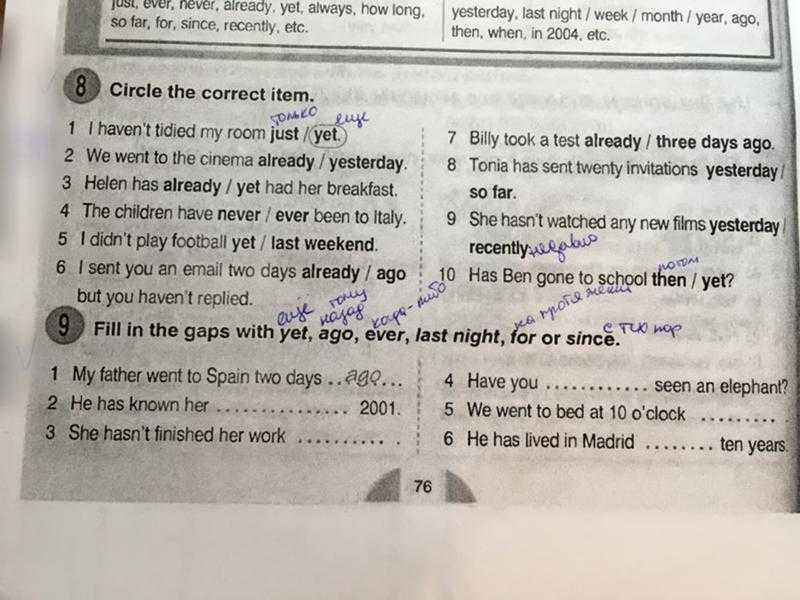 In the same 1940, the Linn C-5 was improved - its engine was moved forward, and the cab received a small hood. An updated version, already equipped with an onboard platform, was once again tested as an artillery tractor, but the US Army again rejected it. In the civilian market, sales also left much to be desired - this "hybrid" was competed with both the traditional half-track Linn and all-wheel drive trucks of the brands FWD, Oshkosh, Coleman, Marmon-Herrington, etc. An interesting fact: Linn C-5 became the first car of the company that can be was ordered in a color other than the branded dark green. Now the car could be painted in the orange color adopted by the road service equipment. nine0003
In the same 1940, the Linn C-5 was improved - its engine was moved forward, and the cab received a small hood. An updated version, already equipped with an onboard platform, was once again tested as an artillery tractor, but the US Army again rejected it. In the civilian market, sales also left much to be desired - this "hybrid" was competed with both the traditional half-track Linn and all-wheel drive trucks of the brands FWD, Oshkosh, Coleman, Marmon-Herrington, etc. An interesting fact: Linn C-5 became the first car of the company that can be was ordered in a color other than the branded dark green. Now the car could be painted in the orange color adopted by the road service equipment. nine0003
| Gross weight, kg | 10 896 |
| Load capacity, kg | 4540 |
| Curb weight, kg | 6356 |
| Wheel base, mm | 4318 |
Engine:
| Carbureted 6-cylinder Hercules YXC3 (on request - diesel Hercules DRXB) 105 (120) |
| Speed on wheels/half-track, km/h: | 56/19 |
| Tire size | 8. 25x20 25x20 |
At the turn of 1941–1942 the wheeled-tracked model received the trade name Catruk, which phonetically derived from the words "Caterpillar" (caterpillar) and "Truck" (truck). nine0003
After the United States entered the Second World War, separate copies of the Catruk were periodically assembled, but the only defense order was received only in 1944. For the US Navy Bureau of Shipyards and Docks, the company built about 25 (according to other sources - 20) C-5 cars, completed with crane booms and single-axle semi-trailers of our own production. The machines had seats for 14 people and a place to accommodate various tools. Road trains could be used both for the transportation of goods and for various repair and restoration work, but nothing is known about their specific purpose. In the 2000s, one copy of such a car was found in Australia, where American sailors left it after the war. It has been restored by Melbourne resident John Belfield to a decent condition.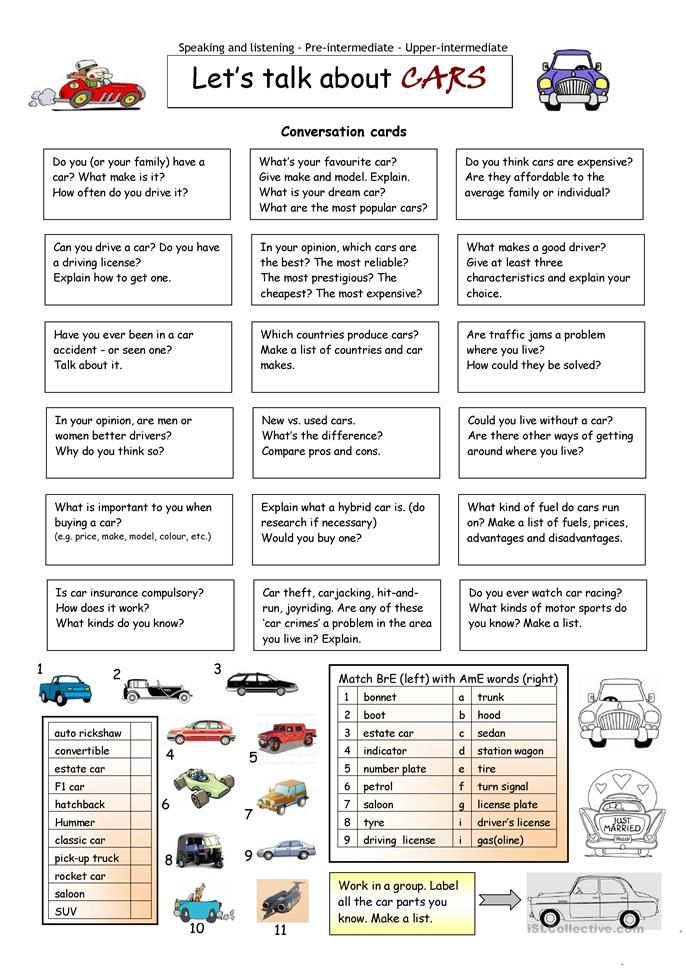 nine0003
nine0003
In 1944, Linn purchased the Catruk sold in 1942 and, by removing the rear axle and drive to the front axle, converted it into a half-track vehicle, which received the designation Linn C-6. Structural changes made it possible to bring the load capacity to 6.8 tons with a gross vehicle weight of 13.6 tons.
After the war, the company continued to produce its previous products, but the demand for machines with a combined chassis was still low. Assembly of the Linn C-5 Catruk was discontinued at 1947. The total number of cars built is unknown, but the scale of production can be estimated at several dozen pieces. The half-track model C-6 was produced a little longer with both gasoline and diesel engines. For the US Navy, in a single copy, its special version was built with a simplified cabin without doors and with a soft top, but no further orders followed. A. Mroz's book "The Illustrated Encyclopedia of American Trucks and Commercial Vehicles" mentions that 25 Linn C-6s were assembled for the USSR. However, it is not known whether they came to our country due to the embargo imposed by the US government in connection with the blockade of West Berlin by Soviet troops. At 1948, the release of the C-6 model was completed.
However, it is not known whether they came to our country due to the embargo imposed by the US government in connection with the blockade of West Berlin by Soviet troops. At 1948, the release of the C-6 model was completed.
Thus ended another attempt to combine a caterpillar tractor and a car in one design. In 1952, Linn Manufacturing Corp. ceased to exist.
Please enable JavaScript to view the comments powered by Disqus.
Crawl or roll? (Part 1)
Part 1 Part 2
Tires are a wonderful invention of mankind. They appeared in the 19th century and have been faithfully serving people in vehicles for more than a hundred years. And throughout all these long years, people have not ceased to struggle with the numerous shortcomings of tire technology. In the same 19th century, caterpillars were invented - as a "closed railway track". And this invention was not free from many shortcomings. Since then, both running systems exist in parallel in technology, are constantly being modernized, and so far none of the concepts has been able to achieve perfection. Therefore, buyers of modern special construction equipment are still faced with the task: what to choose, wheels or tracks? nine0003
And this invention was not free from many shortcomings. Since then, both running systems exist in parallel in technology, are constantly being modernized, and so far none of the concepts has been able to achieve perfection. Therefore, buyers of modern special construction equipment are still faced with the task: what to choose, wheels or tracks? nine0003
Cross-country ability . It is difficult for wheeled vehicles with conventional tires to move on soft soils, liquid mud, deep snow. They are more likely to get stuck, and in order to get out, they will have to be towed by a tracked vehicle, since the ability to not fall through on soft soils due to low pressure on the ground (due to a larger contact area with the ground than a wheel) is one of the advantages of machines on caterpillar tracks. nine0003
Domestic brand Cordiant Professional offers tires of the DM-1 line with all-metal cord, reinforced tread pattern and reinforced breaker design in the most popular sizes. The line includes models for "quarry and off-road dump trucks", as well as for vehicles carrying goods.
The line includes models for "quarry and off-road dump trucks", as well as for vehicles carrying goods.
Due to the large contact area and lugs, the tracks provide higher traction and less damage to the soil. For the same reason, they work better than wheeled ones on slopes. nine0003
Company Tekhtron from Chelyabinsk, one of the largest in the Russian market in this industry, manufactures spare parts for undercarriage systems of tracked vehicles of such brands as DST-URAL, Shantui, Liebherr, Caterpillar, Shehwa, Hyundai, CHETRA, ChTZ and others. Shoes and caterpillars are offered in the following versions: serial, serial lightweight, swamp, for pipelayers, rock. Tracks can be equipped with dry joints or sealed with grease lubrication.
In addition, a tracked vehicle has a longer working season than a wheeled vehicle. It can start working earlier in the spring and finish work later in the fall, it can work after heavy rain, when wheel loaders are not able to drive through muddy clay, and if you still try to get them out, then the matter may end up with wheeled undercarriage repairs. nine0003
nine0003
However, there are special low-pressure tires for driving in snow or deep mud, and in certain conditions they can be even more efficient than tracks - they are able to provide higher traction and flotation.
Stability and load capacity. Tracked machines are more stable than wheeled machines and the tipping load (as well as rated payload) of a tracked machine will be higher than that of a wheeled machine of the same size. Therefore, in situations where the stability of the machine during operation is most important, the tracks work better than the wheels, for example, when excavating from a level that is significantly lower than the ground of the machine. nine0003
Hitachi offers genuine crawler parts. However, if you need to repair an excavator with a long service life, you can use more budget options for spare parts: Hitachi 2Genuine and Hitachi Select Parts. These are analogues of branded parts. Both options are tested to meet Hitachi standards for reliability and durability. They are also covered by the manufacturer's warranty, just like Genuine Hitachi Parts.
They are also covered by the manufacturer's warranty, just like Genuine Hitachi Parts.
Speed and performance. nine0006 Among the advantages of wheeled vehicles are higher speed and ride quality than tracked vehicles, especially on hard, flat surfaces. Therefore, the wheels have machines that during operation mainly drive on public roads and on flat surfaces: motor graders, as well as loaders and other machines that perform loading and unloading and transportation operations. Wheels, unlike caterpillar tracks, do not destroy hard road surfaces.
On the other hand, tracked vehicles can turn on the spot by counter-rotating the tracks, wheeled vehicles have a larger turning radius. nine0003
Ease of transport and weight. In addition, wheeled vehicles are lighter than tracked counterparts, so wheeled vehicles are easier to transport over long distances.
Purchase price and operating costs. A tracked undercarriage is much more complex than a wheel drive, and therefore wheeled vehicles are usually cheaper than tracked vehicles to buy and operate: replacing and repairing tires is easier and cheaper than tracks. The tracked undercarriage has more maintenance, the fuel consumption of tracked vehicles is always higher - all these factors increase the cost of ownership of a tracked vehicle. nine0003
The tracked undercarriage has more maintenance, the fuel consumption of tracked vehicles is always higher - all these factors increase the cost of ownership of a tracked vehicle. nine0003
The Italian company Berco , which is considered the best in quality among suppliers from this country, offers caterpillars in a wide range: from mini excavators (0.5–6 tons), excavators and bulldozers (7–50 tons) to mining equipment ( 50-300 t): standard tracks, including single grouser tracks for heavy duty use; tracks with BPR (liquid lubrication with retaining rings in all sections), which provide high-quality sealing of the tracks and allow you to withstand significant side loads, increase the life of the tracks; Heavy Duty tracks with increased link height and high wear resistance bushings; Grease lubricated tracks with polyurethane W-seals that keep grease in the joint and increase track life by 20%, reduce track wobbling and reduce noise and fuel consumption. nine0003
So we see that each travel system has advantages and disadvantages, and that is why both of them are used in modern machines. Therefore, when making a choice between wheeled or caterpillar machines, one should study all the specific conditions and circumstances in which the machine will work, and then choose the machine that is most suitable for these conditions. And the question of choosing a specific brand and model of the machine and its tires or tracks can be discussed with the specialists of the dealer company selling these products. nine0003
Therefore, when making a choice between wheeled or caterpillar machines, one should study all the specific conditions and circumstances in which the machine will work, and then choose the machine that is most suitable for these conditions. And the question of choosing a specific brand and model of the machine and its tires or tracks can be discussed with the specialists of the dealer company selling these products. nine0003
Tires for motor graders, loaders, wheeled dozers and excavators must be the toughest tires on the market today, capable of handling the toughest conditions: rock, glass and concrete, slurry, loose sand, gravel, debris and to provide high tractive effort.
In the line of business, reliable tire grip and high traction are especially important for bulldozers, motor graders and loaders, which need to minimize wheel slip during operation to increase productivity and economy. nine0003
Working conditions. Before choosing a wheeled machine, it is very important to know exactly what kind of work it will do, what are the working conditions on the construction site, and to choose the right tires - pneumatic or solid - for these specific jobs and conditions that will provide the machine with the highest performance, small downtime and the greatest profitability of operation.
Before choosing a wheeled machine, it is very important to know exactly what kind of work it will do, what are the working conditions on the construction site, and to choose the right tires - pneumatic or solid - for these specific jobs and conditions that will provide the machine with the highest performance, small downtime and the greatest profitability of operation.
From a huge variety of types, types and designs of tires, you can choose the right one for a variety of tasks in terms of tread pattern, number of plies and price level. nine0003
The Indian company BKT Balkrishna Industries Ltd has a high reputation, although it is somewhat inferior to such brands as, for example, SOLIDEAL. VKT tires are supplied in the first configuration for JCB, Bomag, TEREX, Case, HAMM, KALMAR, Dynapac machines.
Industrial pneumatic tire mod. 23.1-26 16PR 159A6 BKT TR-387 TL for vibratory soil compactors, pavers and trailers. The tire is made with a diamond tread pattern that provides good grip, flotation, maneuverability and a smooth ride. It has sufficient wear resistance, withstands sudden changes in temperature. In Russia, AMMANN, Hyundai, JCB, DYNAPAC, BOMAG, HAMM rollers are successfully used with such tires. nine0003
It has sufficient wear resistance, withstands sudden changes in temperature. In Russia, AMMANN, Hyundai, JCB, DYNAPAC, BOMAG, HAMM rollers are successfully used with such tires. nine0003
How many layers of cord? When choosing tires for specific operating conditions, first of all, you need to pay attention to the ply rating - how thick and durable the carcass layer of the tire is. Of course, when it comes to heavy special equipment, especially those that work in extreme conditions, you can be guided by the rule: the more the better.
Selectable tread pattern. The next step is to choose a tread pattern. A tire that will predominantly be used on compacted ground and pavement should have a solid block pattern, the ratio of lug area to groove area should be large in order to reduce abrasion and increase tire stability on the surface. nine0003
Wheeled excavator, in order not to slip in the mud, must be equipped with wheels with the so-called. “aggressive”, that is, a strongly pronounced tread pattern that provides good grip on soft ground - the tread pattern lugs will cut into soft soil and provide good grip and traction.
“aggressive”, that is, a strongly pronounced tread pattern that provides good grip on soft ground - the tread pattern lugs will cut into soft soil and provide good grip and traction.
Motor grader tires are somewhere in between the types described above, they usually operate on relatively compacted, dry surfaces, so they have straight or S-shaped lugs in the figure, creating a fairly reliable engagement and, accordingly, traction. In addition, the tread pattern of motor grader tires is designed to be self-cleaning so that the machine can move on soft ground, mud, soil and gravel, while at the same time the tread must be thick and dense enough to provide smooth running and wear resistance. nine0003
Chinese company Qingdao Qihang Tire Co., Ltd manufactures tires of brands such as Roadguard, Forerunner, Safeguard and Supergider (for agricultural and mining equipment). Only Roadguider (for trucks and cars) and Forerunner (for special equipment) are sold on the Russian market. The rest are sold mostly in the US and are said to have enjoyed some success there.
The rest are sold mostly in the US and are said to have enjoyed some success there.
Pneumatic tire 14.00-24 16PR FORERUNNER TL is designed for graders. It has a directional tread pattern with increased traction on sand, road and soft soil. The maximum allowable tire load is 3650 kg. The maximum speed is 50 km/h. nine0003
Forerunner tires are in many ways similar to their Chinese counterparts: they have a low price, good reliability and sufficient service life.
The ability of a tread to self-clean during rolling is essential for off-road driving, maintaining good grip and traction on soft ground and mud. When the tread pattern is clogged with mud, the tire becomes like a racing slick. The tread pattern must be able to free itself from dirt and stones that have fallen into it when the wheel makes a turn, so that the cleared lugs are ready to crash into soft ground again. Look for tires with a tread pattern that steers mud and soft soil to the sidewalls of the tire, and the shoulders open up to push mud out of the tire. nine0003
nine0003
Driving on gravel can be hazardous to tires because stones can become lodged in the tread grooves and gradually embed into the tire material, or get caught between the tire bead and the rim, causing the tire to leak air. On high-quality tires, you can see small protrusions in the grooves between the lugs, called ejectors - they prevent soil from depositing when the tire is deformed and push dirt and stones out of the grooves. In addition, manufacturers are developing multi-tiered lugs, grooves to channel water to the sidewalls of the tire, and reinforced sidewall structures with special molded protectors to reduce the risk of bead damage. All these elements contribute to the self-cleaning of tires in the process of movement. nine0003
The Belgian company CAMSO has factories in Europe, Canada (SOLIDEAL CAMOPLAST brands), Sri Lanka and of course China. SOLIDEAL brand tires are famous for their high reputation for excellent technical characteristics, wear resistance, impact resistance. Natural rubber is used in their production, which provides good resistance to mechanical damage. They are closer to the upper price range. Maud. 10.00-20 SOLIDEAL 16PR WEX - diagonal tires, they have a wide and deep self-cleaning tread pattern with wide sipes, they are puncture resistant, designed for excavators. Made of durable rubber, have additional sidewall protection against cuts. Recently, the company has undergone a rebranding, and now it has been decided to produce all tires and tracks under the CAMSO brand. nine0003
Natural rubber is used in their production, which provides good resistance to mechanical damage. They are closer to the upper price range. Maud. 10.00-20 SOLIDEAL 16PR WEX - diagonal tires, they have a wide and deep self-cleaning tread pattern with wide sipes, they are puncture resistant, designed for excavators. Made of durable rubber, have additional sidewall protection against cuts. Recently, the company has undergone a rebranding, and now it has been decided to produce all tires and tracks under the CAMSO brand. nine0003
Puncture resistant. No matter what type of machine you choose tires for, one of the main objectives will always be to ensure the minimum downtime associated with tire maintenance, which means that tires must be puncture resistant and have strong sidewalls and beads that firmly cover wheel rims. While working on sites strewn with fragments of concrete and construction debris, where buildings are being destroyed, punctures, ruptures and cuts of tires are the main problems of wheeled vehicles. In the design of tires designed for such work, manufacturers add especially reliable reinforced cord layers - in tires with a diagonal cord, and special radial and side breaker, the composition of the tread material is selected as strong and reliable as possible, able to withstand punctures, cuts and wear. nine0003
In the design of tires designed for such work, manufacturers add especially reliable reinforced cord layers - in tires with a diagonal cord, and special radial and side breaker, the composition of the tread material is selected as strong and reliable as possible, able to withstand punctures, cuts and wear. nine0003
One of the many Chinese brands Top Trust is owned by Qingdao Wangyu Trust, which produces tires for commercial vehicles, industrial and agricultural vehicles, trucks, and cars.
The Top Trust L-3 industrial tire is designed for a variety of special equipment, from agricultural to mining. The tire has a universal tread pattern with a diagonal pattern, divided into several functional sections and providing good grip on any surface. The central part contains massive polygonal blocks. Large dimensions increase the area of the contact patch, while ensuring uniform distribution of the load on it. On unpaved surfaces, these properties are complemented by high efficiency in longitudinal accelerations. It is worth noting the design of the shoulder zones, which contain high lugs. The tread is made of a rubber compound that is resistant to wear, punctures and cuts. The all-metal carcass is reinforced to increase the tire's load capacity. nine0003
It is worth noting the design of the shoulder zones, which contain high lugs. The tread is made of a rubber compound that is resistant to wear, punctures and cuts. The all-metal carcass is reinforced to increase the tire's load capacity. nine0003
Pneumatic tyres. If the loader will be doing the most common general construction work, it will be best suited with all purpose tires. Designed for maximum traction and grip, they feature thick sidewalls and are made from natural and synthetic rubber.
HD Heavy Duty or Heavy Duty Tires perform better than conventional tires in harsh environments and heavy loads. Heavy Duty tires are made from premium quality rubber, with a higher self-cleaning tread pattern, larger footprint and more ply cords to significantly increase tire life. According to the ply rate of modern tires, one can judge the load capacity of the tire. Reinforced sidewalls protect the tire from cuts and punctures. To better protect the wheel rim and reduce sidewall damage, some heavy-duty tires are designed with additional bead protectors. In addition, heavy duty tires offer increased wear and puncture resistance compared to conventional tires, allowing them to perform well in harsh road conditions on abrasive and tire-damaging surfaces. nine0003
In addition, heavy duty tires offer increased wear and puncture resistance compared to conventional tires, allowing them to perform well in harsh road conditions on abrasive and tire-damaging surfaces. nine0003
Plant JSC "Voltyre-Prom" (Volzhsky, Volgograd region) in 2013 was acquired by the American company Titan International, Inc. (she also owns the Goodyear Farm Tires brand). Among the products of the plant is a line of industrial tires VOLTYRE HEAVY of 19 models. These are oversized bias-pneumatic tires designed for use on motor graders, front loaders and backhoe loaders. They are characterized by a strong multi-layer carcass capable of withstanding short-term overloads, a reinforced sidewall and a massive tread with high wear resistance and durability. High grip tread pattern has good resistance to damage and provides long service life. nine0003
Tires for muddy ground. Low profile soft and muddy tires, as their name suggests, perform best when maneuvering on soft and muddy surfaces.